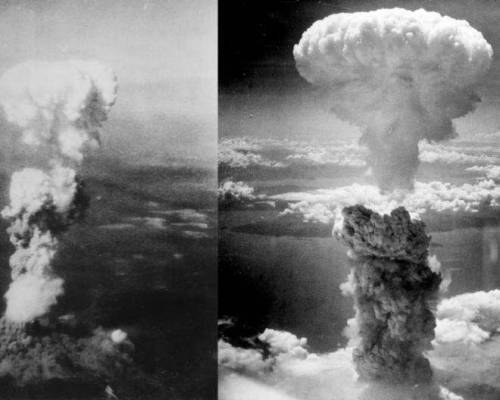Radioactive Fallout in Hiroshima and Nagasaki Immediately after the detonation of the Hiroshima
Radioactive Fallout in Hiroshima and Nagasaki Immediately after the detonation of the Hiroshima (left) and Nagasaki (right) atomic bombs, two types of radioactive fallout were present, initial and residual. Initial radiation comes from the detonation of the bomb, and immediately effects those in the local vicinity of the blast. The large amount of immediate deaths in the bombings were due to other factors such as flash or flame burns, falling debris, suffocation, etc… and not that of initial radiation. However, in the coming days and weeks following the blasts, about 30-50% of survivors succumb to the extreme amounts of initial radiation their bodies had absorbed. Residual radiation has a longer lasting effect, and is what sticks (or is formed inside of) physical matter such as soil, buildings, and bodies. Deaths from residual radiation were relatively low due to the lack of a substantial amount of nuclear fallout as seen in other nuclear incidents. The bombs were detonated ~500 meters above street level, maximizing the large scale devastation to buildings, but limiting the amount of radioactive soil thrown into the atmosphere (that would eventually rain back down onto the ground). Most of the residual radiation had been pushed upwards into the mushroom cloud. The threat of nuclear contamination was relatively low, and didn’t seem to pose a long threat of radiation poisoning as seen in the Chernobyl disaster. Because of this, reconstruction of the cities began only months after the bombings. -- source link
Tumblr Blog : japanese-history.tumblr.com
#modern#japanese history#history#hiroshima#nagasaki#atomic bomb#radioactive#radiation#nuclear

